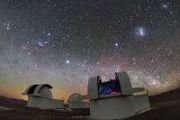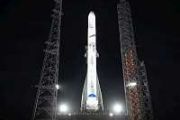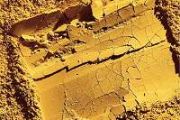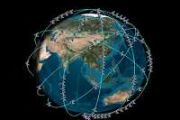
Copernical Team
Juice gets wings
 Image:
Juice gets wings
Image:
Juice gets wings Kenya deploys first earth observation satellite into space

Kenya's first earth observation satellite was launched into space Saturday after two aborted attempts earlier in the week.
The African country's Taifa-1 was among the satellites on SpaceX's Falcon 9 rocket, which lifted off from Vandenberg Space Force Base in California.
The rocket's launch had to be scrubbed twice previously due to bad weather.
Kenya's satellite will fly over the country every four days and gather data for agriculture, land and environment monitoring, according to the Kenya Space Agency.
Data from the satellite is expected in the coming months, and the agency has set up a team of analysts. It said says the information will be distributed free to government agencies and to private companies for a reasonable fee.
The satellite was developed and designed by Kenyans but manufactured at Endurosat in Bulgaria at a total cost of 50 million Kenyan shillings ($371,000).
Kenyans were eager to watch the Falcon 9's launch online. Some described having the Taifa-1 enter orbit as a moment of national pride.
The country launched an experimental nanosatellite that lifted from the International Space Station in 2018.
Elon Musk forms X.AI artificial intelligence company
 Elon Musk has formed an X.AI artificial intelligence corporation based in the US state of Nevada, according to business documents that surfaced on Friday.
Musk, who is already the boss of Twitter and Tesla, was listed as director of X.AI Corporation founded on March 9, a state business filing indicated.
Musk recently merged Twitter with a newly created "X" shell company, keeping the bran
Elon Musk has formed an X.AI artificial intelligence corporation based in the US state of Nevada, according to business documents that surfaced on Friday.
Musk, who is already the boss of Twitter and Tesla, was listed as director of X.AI Corporation founded on March 9, a state business filing indicated.
Musk recently merged Twitter with a newly created "X" shell company, keeping the bran Kenya launches first operational satellite into orbit
 Kenya's first operational satellite was launched into orbit on Saturday by a SpaceX rocket that took off from California, USA, according to images from the US space company.
The launch, originally scheduled for Monday night in the United States, was postponed several times this week due to bad weather.
On Saturday, a SpaceX Falcon-9 rocket took off at 0648 GMT from the base at Vandenbe
Kenya's first operational satellite was launched into orbit on Saturday by a SpaceX rocket that took off from California, USA, according to images from the US space company.
The launch, originally scheduled for Monday night in the United States, was postponed several times this week due to bad weather.
On Saturday, a SpaceX Falcon-9 rocket took off at 0648 GMT from the base at Vandenbe How different were galaxies in the early universe
 An array of 350 radio telescopes in the Karoo desert of South Africa is getting closer to detecting the "cosmic dawn" - the era after the Big Bang when stars first ignited and galaxies began to bloom.
A team of scientists from across North America, Europe, and South Africa has doubled the sensitivity of a radio telescope called the Hydrogen Epoch of Reionization Array (HERA). With this bre
An array of 350 radio telescopes in the Karoo desert of South Africa is getting closer to detecting the "cosmic dawn" - the era after the Big Bang when stars first ignited and galaxies began to bloom.
A team of scientists from across North America, Europe, and South Africa has doubled the sensitivity of a radio telescope called the Hydrogen Epoch of Reionization Array (HERA). With this bre Mapping dark matter like never before
 A new groundbreaking image from one of the world's most powerful telescopes that reveals the most detailed map of dark matter distributed across one quarter of the sky, and deep into the cosmos, offers scientists a perspective that may lead to new methods to demystify dark matter.
The research that led to the image, completed by the Atacama Cosmology Telescope (ACT) collaboration, also pro
A new groundbreaking image from one of the world's most powerful telescopes that reveals the most detailed map of dark matter distributed across one quarter of the sky, and deep into the cosmos, offers scientists a perspective that may lead to new methods to demystify dark matter.
The research that led to the image, completed by the Atacama Cosmology Telescope (ACT) collaboration, also pro Europe's JUICE mission blasts off towards Jupiter's icy moons
 The European Space Agency's JUICE space probe successfully took off on Friday for a mission to discover whether Jupiter's icy moons are capable of hosting extra-terrestrial life in their vast, hidden oceans.
The launch on an Ariane 5 rocket from Europe's spaceport in Kourou, French Guiana, came after a previous attempt on Thursday was called off due to the risk of lightning.
Despite clou
The European Space Agency's JUICE space probe successfully took off on Friday for a mission to discover whether Jupiter's icy moons are capable of hosting extra-terrestrial life in their vast, hidden oceans.
The launch on an Ariane 5 rocket from Europe's spaceport in Kourou, French Guiana, came after a previous attempt on Thursday was called off due to the risk of lightning.
Despite clou SpaceX will try to launch most powerful rocket ever Monday
 SpaceX plans to carry out its first test flight on Monday of Starship, the most powerful rocket ever built, designed to send astronauts to the Moon and eventually beyond.
The launch is scheduled to take place at 7:00 am (1200 GMT) from the sprawling Texas base of the private space company owned by billionaire Elon Musk.
Fallback times are scheduled later in the week if Monday's attempt i
SpaceX plans to carry out its first test flight on Monday of Starship, the most powerful rocket ever built, designed to send astronauts to the Moon and eventually beyond.
The launch is scheduled to take place at 7:00 am (1200 GMT) from the sprawling Texas base of the private space company owned by billionaire Elon Musk.
Fallback times are scheduled later in the week if Monday's attempt i NASA's Lucy mission snaps its first views of Trojan asteroid targets
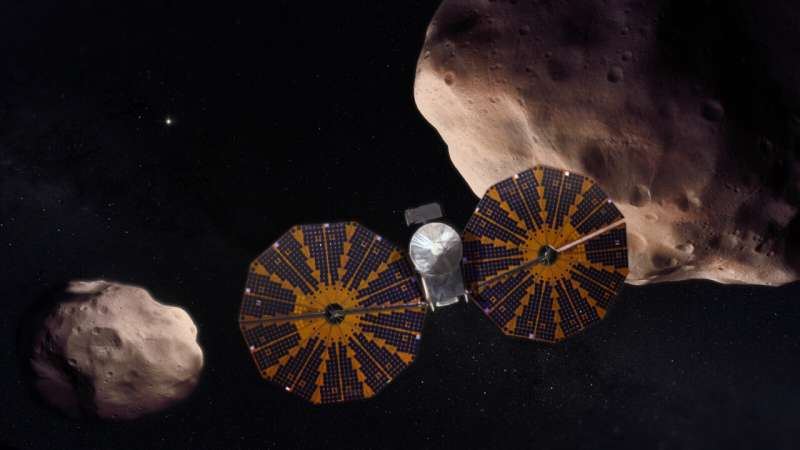
Some of the asteroids NASA's Lucy mission will visit are still more than 330 million miles (530 million kilometers) away from the spacecraft, which is more than three times the average distance between Earth and the sun. But despite the great distance and the comparatively small sizes of these asteroids, Lucy caught views of four of them recently.
From March 25 to 27, 2023, Lucy used its highest resolution imager, L'LORRI, to capture its first views of four Jupiter Trojan asteroids. From left to right in the above image: Eurybates, Polymele, Leucus, and Orus.
Although the four images are all at the same scale, the orientation of each is different, reflecting the different orientations of the L'LORRI camera as it turned to capture each target.
The targets were also observed for different time periods based on their rotation periods:
- Eurybates images were taken over a span of 6.5 hours.
- Polymele, about 2.5 hours.
- Leucus, 2 hours.
- Orus, 10 hours.
These images are the first in a series of planned observations designed to measure how the Trojan asteroids reflect light at higher angles than is observable from Earth.
NASA's Ingenuity Mars helicopter completes 50th flight
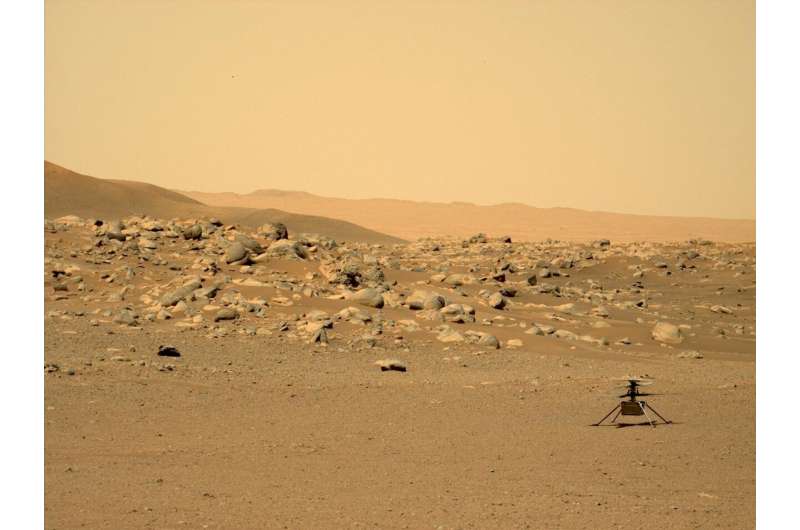
The history-making rotorcraft has recently been negotiating some of the most hazardous terrain it's encountered on the Red Planet.
NASA's Ingenuity Mars Helicopter has completed its 50th flight on Mars. The first aircraft on another world reached the half-century mark on April 13, traveling over 1,057.09 feet (322.2 meters) in 145.7 seconds.
















